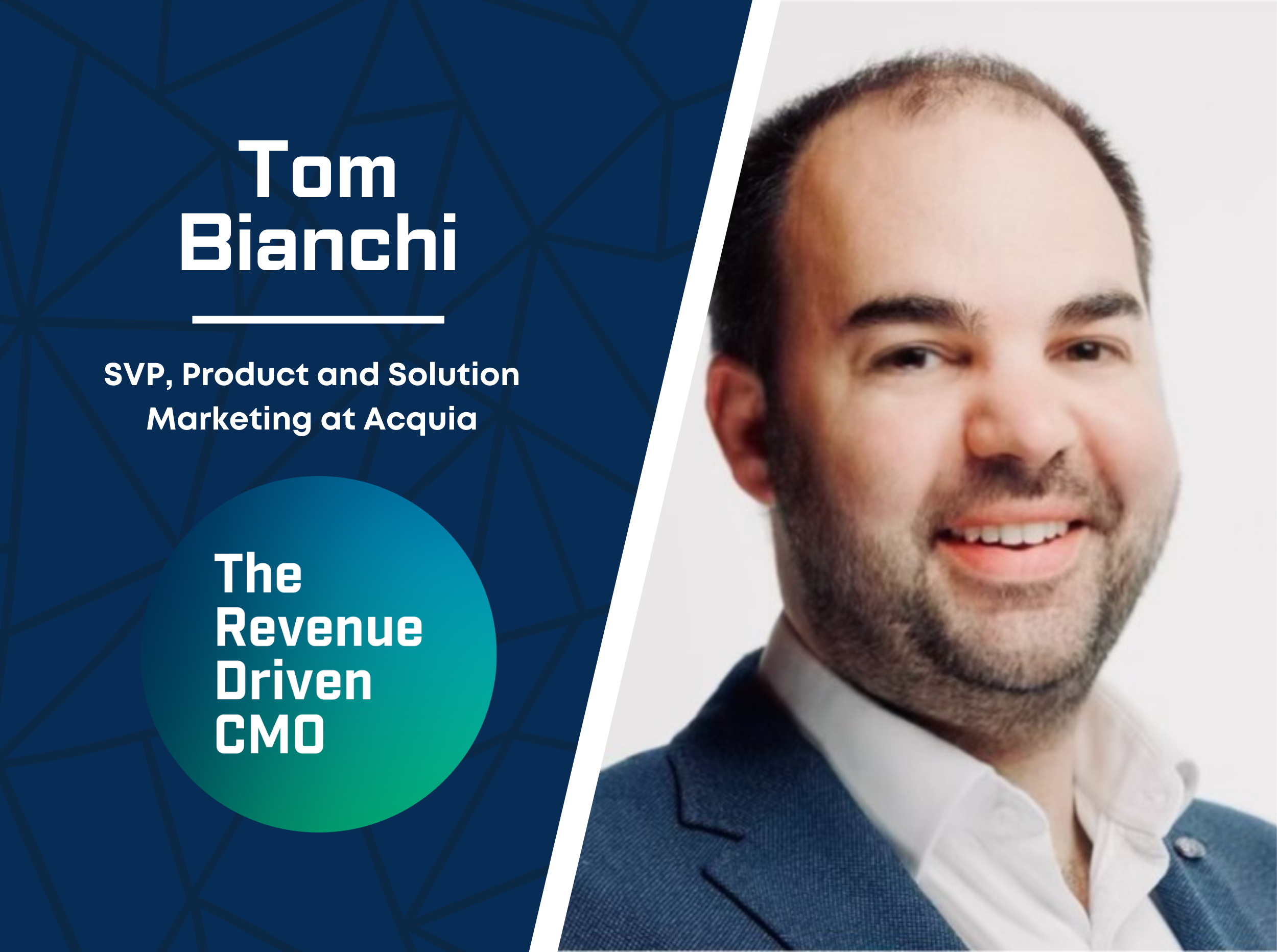
The Complete LinkedIn Ads Best Practices Guide
If you want to learn how you can optimize your B2B LinkedIn ads to perform better, today’s guide is what you’ve been looking for. We’re taking a deep dive into LinkedIn paid ads best practices to show you what’s really possible when advertising on this often underused platform.
But before you can learn all the secrets to LinkedIn ad optimization and getting the results you seek, we’ll address whether advertising on LinkedIn is worth the effort and review the most important best practices. Then, we’ll share platform-specific tips and give you some advice for optimizing your current LinkedIn campaigns.
So let’s get right to the point:
Does Advertising on LinkedIn Work?
We know you’re here to learn the top LinkedIn paid ads best practices, but we felt it necessary to address the elephant in the room: Does advertising on LinkedIn work?
This is a valid question, especially when you have a limited budget to work with. You may be cautious about spending money on LinkedIn ads when Google ads, Bing ads, and other options may already be eating up some (or even the majority) of your budget.
So, as with many things, the answer here depends on two key questions:
- Is your target audience B2B?
- Are you targeting key decision-makers of businesses?
These two questions alone can help you decide whether advertising on LinkedIn is worth your effort. If these two answers are yes, you have a decent shot at gaining traction, clicks, and conversions using B2B LinkedIn ads. Yet they’re not the only questions you should consider.
See, LinkedIn paid ads operate a little differently than Google or Bing ads, for example. While the auction-style bidding premise is the same, a few other components are distinct, which we’ll get into during this guide.
The good news is that, when done correctly, LinkedIn paid ads can quickly turn into a steady stream of high-quality leads. And the results are clearly worth it. After working with one of our clients on their LinkedIn paid ad campaign, we achieved a 79.84% decrease in their cost per leads (CPL). Plus, when we added LinkedIn to their overall paid ad strategies, their total leads increased by a whopping 619%. And this is just one example.
So, is advertising on LinkedIn effective?
The answer is a resounding yes, as long as you know what you’re doing. Fortunately, this guide will help you master the top LinkedIn paid ads best practices. It won’t do all of the heavy lifting for you, but it does offer expert insights to help guide your decision-making.
Speaking of those knowledge nuggets, it pays to have a deeper understanding of LinkedIn before moving on to your ad campaigns.
5 General LinkedIn Tips to Keep in Mind Before You Optimize Your Campaign
You probably have a decent understanding of what LinkedIn is and how it can be useful. It’s essentially a social networking platform focused on businesses. Users share both company and industry updates rather than sharing everyone’s favorite cat and dog memes like on other social platforms.
However, this isn’t the only way you should look at LinkedIn. Below are 5 tips from our guide on 13 LinkedIn ground rules that you should keep in mind when dealing with this platform specifically:
1. Always Think in Terms of Solving Problems and Offering Value
Every time you share a post or create an ad, you absolutely have to think about your target audience. This is true no matter which social platform you’re using, but it’s especially important with LinkedIn. Your audience here has limited time, and most are looking to quickly network and expand their list of contacts while also getting the latest business news.
So before you share a post or publish an ad, you must think:
- Am I offering value to my audience?
- Will this help solve their problem?
If your post or ad doesn’t check those boxes, you should scrap it and come up with one that does. Otherwise, your ad will go unnoticed. That also leads us to the next point…
2. Understand and Write for Your Target Audience and Prospects
You have to dig deeper into your target audience data to truly understand them. With other platforms, you may be able to get away with a surface-level understanding, but doing this on LinkedIn is a surefire way to get lost in a sea of other competing posts.
So during the drafting process, think about:
- What your audience needs help with.
- Where they are in your buyer’s journey.
- What problems they have and how you can solve them differently or better than others.
- Tips they’re searching for.
By leading with your prospects’ needs, you’ll have a better chance of getting their attention. And the only way to do that is to really understand what they’re looking for and how you can help. You’ll need to uncover this long before you start creating ads.
3. Use Words and Phrases Your Audience Uses
While you’re reaching a corporate crowd on LinkedIn, they’re still humans behind the screen. So you shouldn’t speak in legal-eze terms or sound like a robot. Instead, you’ll want to use their lingo; it shows that you know what you’re talking about and makes you sound like one of them—someone they can relate to. Your message should be simple, digestible, and to the point, and your tone should be casual but still professional.
4. Don’t Overthink It
Yes, some ads will flop. That’s inevitable and even okay. You don’t want to overthink your ads to the point that this becomes a hindrance. It’s all about testing many different variations to see what resonates best with your audience. You may find that complex ad text performs worse, for example.
Even if an ad flops, don’t let it discourage you. Understand why the ad may have failed, and use that insight to iterate until you get it right. It may take a few tries, but that’s also one of the best ways to learn more about your audience’s preferences.
5. Get To Know the Algorithm
There’s no sugarcoating this one: LinkedIn’s algorithm is a little different than the rest. You’ll need to understand its quirks to work with it and master the best practices for advertising on this platform.
For example, LinkedIn prefers niche, occupation-specific conversations as opposed to generalized chat. So rather than reaching every person who has the hashtag #management in their profile, you’re better off targeting a more specific audience like #performancemanagement.
That’s why it’s crucial to get super specific about your audience. And if you’re targeting multiple ones—which is normal— you should create ads for each subset. Don’t try to lump them all into one category (we’ll explain why later).
You should also be aware that LinkedIn “categorizes” prospects based on many factors, including skills such as “leadership” and “management.” So the platform itself offers unique targeting options that you must understand before you can take full advantage of them.
So what’s the best way to get started with advertising on LinkedIn?
What It Takes to Set Up Your LinkedIn Ad Campaign Right
Now that you have a better understanding of how advertising on LinkedIn works, let’s move on to making sure you’re set up correctly right from the start. Since LinkedIn has a great tutorial on this, we’ll just highlight the features that we’re going to use in our LinkedIn paid ads best practices.
1. Create a Free LinkedIn Page
If you don’t already have a LinkedIn company page, this is your first step. This puts your company on LinkedIn’s radar and gives people a chance to learn more about your business. We’ll assume you already have this and jump right ahead to the next point.
2. Create Your Campaign Manager
Campaign Manager, also known as your Ad Account, is where you’ll set up, manage, and optimize your LinkedIn ad campaigns. It’s similar to Facebook’s platform in that it gives you everything you need to create, run, and test your ads. So you’ll need to sign up for a Campaign Manager account before you can access LinkedIn’s paid ad features.
3. Determine Your Objective
LinkedIn uses objective-based ad campaigns, which simply means you’ll want to establish a goal before you create your ads and their supporting campaign.
According to LinkedIn, the objective is the action that your potential customers will take once they see your ad. They break down the objectives into three main themes:
- Brand awareness. This maximizes your brand’s exposure by capturing as many impressions as possible.
- Consideration. This campaign style focuses on getting your customers to take the next step to learn about your business. So this might be clicking on your ad to get to a landing page and recording that action or getting website visits, social engagement, or video views.
- Conversion. These campaigns are all about lead generation. With this type of objective, LinkedIn will track clicks to your downloads (or even lead forms) to see if a customer went from clicking on your ad to sending a job application or providing his or her email. It records these actions, too.
See why it’s so critical to nail down your goals before you rush to create ads?
4. Set Up a LinkedIn Pixel
A pixel provides vital tracking information. It can monitor for conversions, which helps you compare how your campaigns are performing. It also collects website data so that you can retarget website visitors on LinkedIn. Check out LinkedIn’s instructions here.
5. Understand the Available Ad Formats
There are several different ad types that you can choose from within LinkedIn’s ad campaigns. Here’s the gist of each one:
- Sponsored Content. This is like your typical ad on social media; it lives within the feed and can be shown on any device as a user scrolls through. Think of Sponsored Content like a newsfeed style ad that shows up between your connections’ posts.

- Message Ads. You’ve probably received one of these without even realizing that it was an ad. Essentially, these are sent as direct messages to users and come off as if you sent them an email with your pitch. LinkedIn has recently upgraded Message Ads to give users more interactive variations. Conversation Ads, which are a souped up version of Message Ads (formerly Sponsored InMail), let you create custom campaigns around things like product education, ebook downloads, webinar sign-ups, and more. You can even use custom calls to action to provide users different options for a more personalized journey. You can also send a more personalized message:

- Text Ads. Text ads are similar to Google or Bing ads in that they use either a pay-per-click (PPC) or cost-per-impression (CPM) model. These have a headline, description, and image like ads on most other advertising platforms:
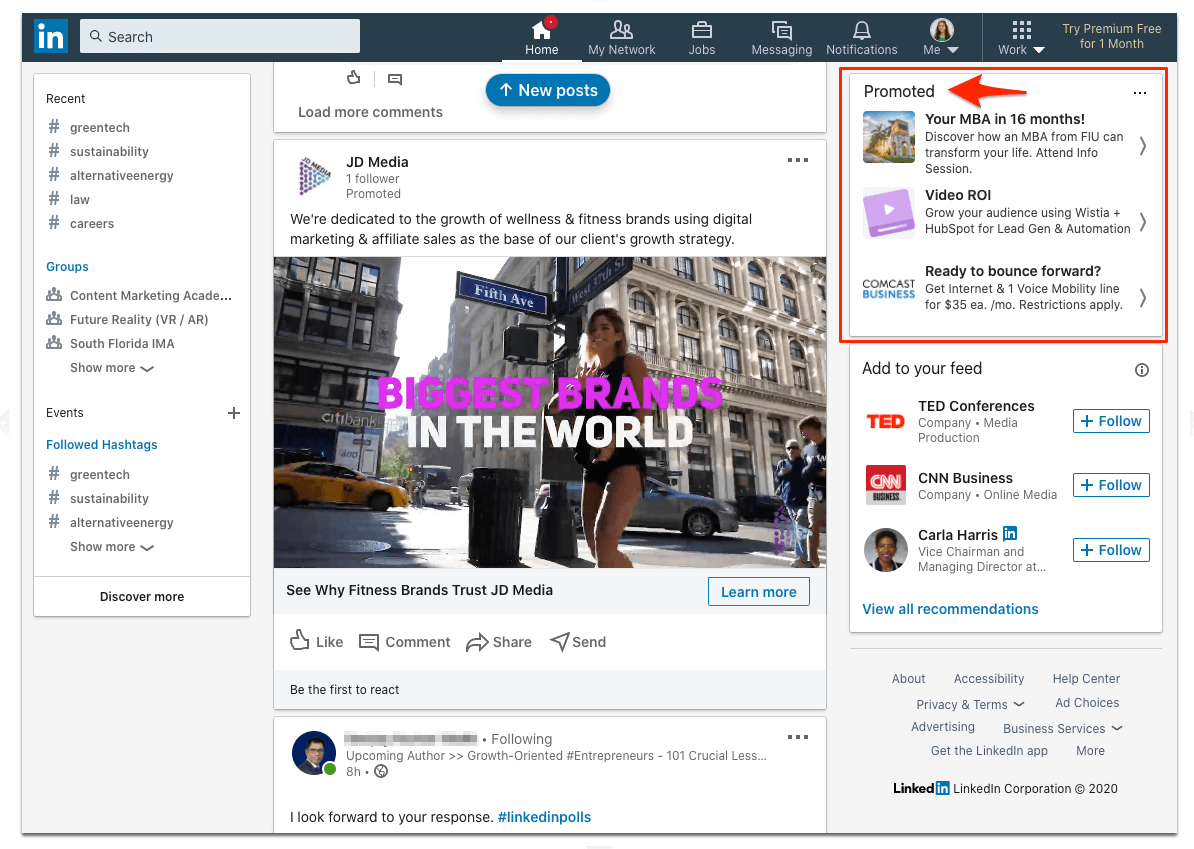
- Dynamic Ads. These ads are more personalized to the user they’re targeting. They can help your business page build its follower list and grow your influence, among other goals.
Don’t worry—we’ll take a more in-depth look at each ad type in the next section.
4 Types of LinkedIn Ads (+ Tips on Each)
The first of our LinkedIn paid ads best practices involves learning more about each type of ad you can use. Since they’re all geared toward different goals, you may want to start with a combination of a few formats. Then you can see how your audience reacts and tweak from there. You have a choice of using:
1. Sponsored Content
To use these, follow these instructions to request permission from your campaign manager. Your Ads account must be linked to your LinkedIn page. Sponsored Content is a popular ad type for most basic campaigns. Since they appear in the newsfeed, they work for any goal. You have a few different options when using Sponsored Content ads, including:
Single Image Ads. These ads appear like updates in a user’s social newsfeed. So they’ll see your image plus your text above it as they scroll.
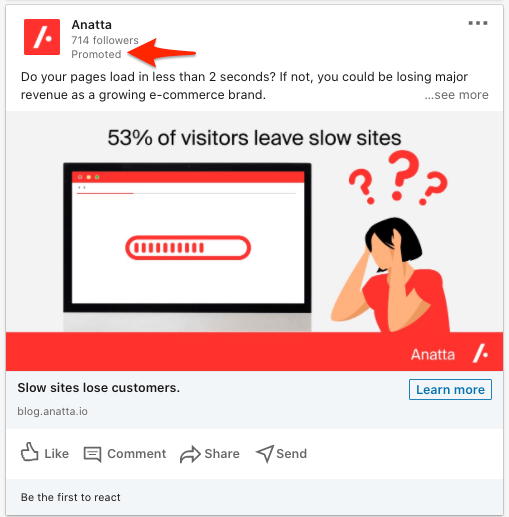
Video Ads. These ads show your users a video instead of a static image that they can view and click on when they scroll through their feed. They are good for brand awareness and impressions.
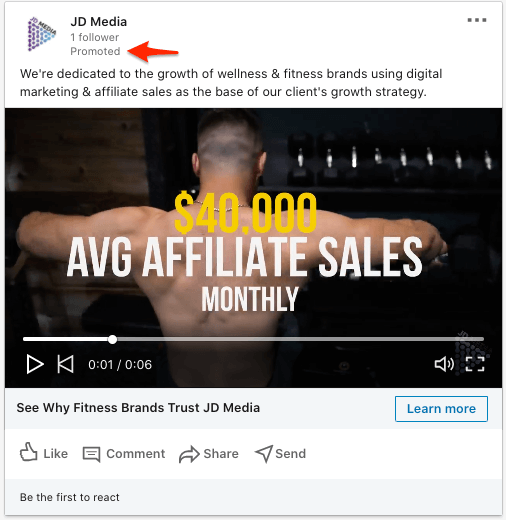
Carousel Ads. These ads show users a series of images that they can scroll through. You can share a story, guide users to more products to view, or capture a user’s attention.
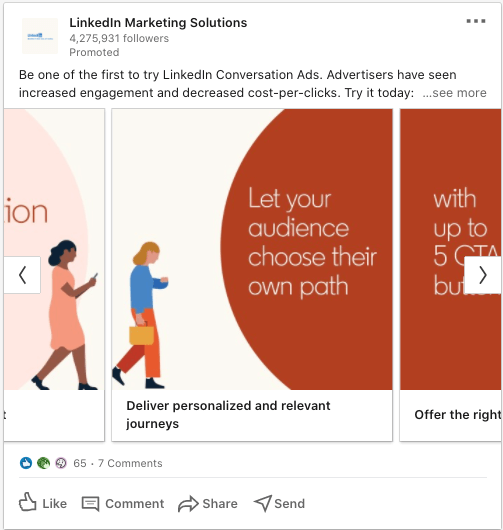
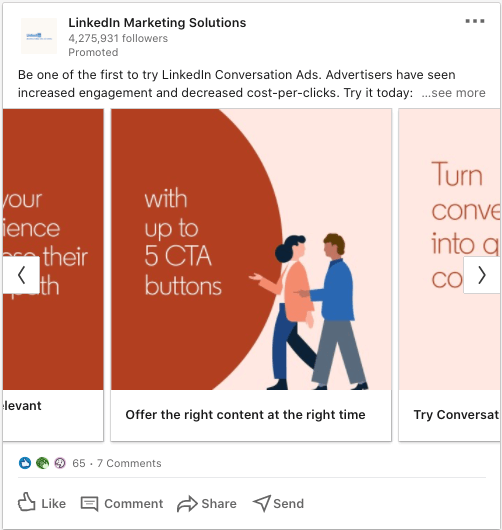
Lead Gen Ads. These ads can allow a user to fill in their email while remaining on LinkedIn’s site. The seamless user experience often results in more leads and tends to be faster for the user.

And always try to follow these basic best practices for Sponsored Content:
- Keep your headlines short. Stay under 150 characters so that your copy doesn’t get cut off.
- Get to the point. Your message should be brief so that users read it.
- Don’t bury your CTA within the text—it should be clear and attention-grabbing.
- Choose a clear image with legible copy. Since your target audience may be using LinkedIn on their phones, your image should be easy to read even on small screens. Test this to make sure your image is clear enough on any device.
You’ll also want to get specific with your ad targeting to improve its effectiveness. We’ll dive into more detail on this topic later in this guide to show you how that’s done.
2. Message Ads
If you have a Conversion goal, this ad type is for you. Message Ads give you the ability to send targeted prospects a message right to their LinkedIn inbox. While these are still technically ads, they look more like an email or direct message. Thanks to this feature, you won’t have character limits to worry about; you can communicate directly and naturally with your prospects. (That said, don’t write an essay! People are busy, so they prefer messages they can skim.)
There are two types of Message Ads you’ll want to be familiar with: Conversation Ads and Sponsored InMail, as touched on earlier in this guide.
InMail Message Ads allow you to send a targeted message with just one single call to action. These ads are helpful for keeping your message short and sweet and encouraging your prospect to take that one action. If you want to use a sender other than yourself, follow these instructions to get their permission and access. InMail works great for recruiting, offering special deals, and promoting events.
On the other hand, the new Conversation Ads give prospects a more interactive experience since you can add more than one call to action and drive engagement where your prospect is most interested (since they have a few options on what they can do).
Currently, LinkedIn doesn’t provide data on which options get clicked. We suggest tagging your URLs with UTMs so that you can at least track which option drove the most clicks to your site.

When dealing with InMail Ads or Conversation Ads, keep these best practices in mind:
- Shoot for Tuesday and Wednesday since most businesses are busy on Mondays, and everyone thinks about the weekend during the latter half of the week.
- Use a value-driven message. Show your prospect how you can solve their problem before diving into your features and benefits.
- Get creative with your subject line. As with emails, your subject line should capture a reader’s attention, be genuine, and entice readers to click for more info. We’ve found that short and vague questions work really well here.
- Always use custom greetings. That includes using the person’s name so that your message feels more personal.
- Keep your introduction short to avoid wasting your reader’s time.
3. Dynamic Ads
With Dynamic Ads, you have a few formats you can choose from:
Follower Ads. These help you grow your audience and find more targeted followers.
Spotlight Ads. These ads will showcase your content to your target audience by putting it right in front of them. This helps drive them back to your website.
Job Ads. These are best used when you’re searching for qualified candidates to join your team:

Content Ads. These help you generate leads anytime someone downloads your content.
From our experience, we’ve found that people sometimes actually pay more attention to the text within Dynamic Ads versus anything else. So that makes them a great first place to start when optimizing and improving your campaign.
If you’re looking to optimize your Dynamic Ads, make sure to:
- Try different ad creatives. You can swap out the image background or test different sizes and variations of your logo.
- Personalize your ad by including your target audience’s profile picture within the ad. You can do this all from changing one simple setting.
- Test multiple calls to action to see which ones perform better.
4. Text Ads
Since most people are familiar with Google or Bing search ads, text ads are usually the first place many prospects begin trying out LinkedIn’s paid ads. They’re not a bad place to start if you have a large audience and low budget or need a low cost-per-click.
Similarly to those platforms, you can drive traffic to your website, and you’ll pay for this in a PPC or CPM format. Because of this, you can easily control your budget and ad costs when it comes to text ads.
Text ads are helpful if you have a large audience, a low budget, or you need a cheap cost per click.

To optimize text ads, you’ll want to follow similar best practices to Google, Facebook, or Bing:
- Create multiple campaigns. You should create separate campaigns for each of your products or services. We’ll show you how to duplicate your campaigns to test out different audiences later in this guide. LinkedIn even offers Campaign Groups to group campaigns.
- Test multiple ad variations. Get creative and change up the ad text to see what resonates best with your audience. There should be at least two variations per ad group.
- Refresh your ads every so often to capture (and recapture) people’s attention.
- Test your ad elements to see which ones score the most significant impacts.
- Optimize your bids to ensure that they’re showing when they should be.
We’ll expand on these points in just a bit.
Now that you have those basics down, you’re ready to take things to the next level.
9 LinkedIn Paid Ads Best Practices
When you and your team follow our top 9 LinkedIn paid ads best practices, you’ll optimize your campaigns for more leads, higher conversions, and a (fingers crossed!) better ROI. To get there, you must:
1. Understand Audience Targeting Options, and Use Them Wisely
Your hard work creating ads will be for nothing if you’re pitching to the wrong audience. So your first step is to understand how LinkedIn’s audience targeting works, including:
LinkedIn’s Target Audience Size Best Practices
You may think that casting a wide net gives you a better chance of capturing more traction with your campaign, but that’s not always the case. If you use this strategy, you may find yourself swimming in a pile of unqualified leads that cost money but don’t pan out. And no one wants that.
Text ads can be fruitful with as few as 60,000 members all the way up to 400,000. Sponsored Content and Sponsored Messages, however, do better with a minimum of 300,000 members.
On the flipside, going too narrow with your audience—which leaves you under that 300 member minimum—means your ads won’t get approved to show. If you get a message about this from LinkedIn, you can add, update, or remove some of your targeting options to fix it.
Using AND-OR Targeting Attributes to Tweak Your Audience Size
You can also add several attributes to include in the targeting setup so your audience size increases. OR logic applies here, and your target audience just needs to match one of the criteria listed to be shown your ad.
On the other hand, using the Narrow Audience Further feature in targeting will shrink your target audience pool, which may be ideal if you’re niching down. This time, your prospects must match at least one attribute to be included. The AND logic kicks in if that attribute matches what you’ve included in your Narrow Audience Faster targeting. Adding attributes to the Exclude People section will also decrease your prospect pool even if they also match one of your other attributes.
You can use these settings to start, but you must then analyze your results to see if you’re going too broad or need to go broader because your settings are too narrow. You can see this information in your Demographic Reporting, which shows you who is engaging with your ads.
Use Matched Audiences
Matched Audience lets you tap into your website data, email lists, and account-based marketing to help set up your audience targeting. If you’re using this feature along with other audience attributes, however, LinkedIn will decrease your audience size since your prospects have to match both requirements to see your ad. Uploaded lists and website data require a minimum audience size of 300. WebMechanix recommends uploading lists with 1,000 or more contacts for the most optimal targeting.
Applying multiple lists from your Contact List targeting, Account List targeting, and Data Integration can help you expand your audience size since people can fall into any one of those buckets to see your ad. This also happens when you use Website Retargeting lists. The key here is to make sure that these groups have some commonality so that you can still customize the messaging and that it works for each category all the same.
Other Targeting Options in LinkedIn’s Paid Ads
Don’t forget to also target your prospects using:
- Geographic location. You can target users based on where they live or the locations they’re searching from. This is usually based on their long-term location, or their IP address for short-term visitors. You can set your targets to focus on recent or permanent locations to capture this.
- Company information. Use this feature to target companies of a certain size, within a specific industry, with a certain number of followers or a set growth rate, or specific company names.
- Demographics. You can use this to target users based on their age or gender.
- Education. Education targeting can help you target particular schools, degrees, or fields of study.
- Job experience. This targeting feature lets you hone in on prospects with specific titles, skills, years of experience, job function, and seniority.
- Interests. The interests feature lets you target both interests and specific groups that someone is involved in.
It’s in your best interest to use all these audience-targeting features, even if it requires you to get ultra-specific about who you want your ads to show for.
2. Set Up a Funnel Using Different Ads Based on Your Prospect’s Stage of Awareness
Narrowing down your various user categories will help you target them accordingly and reach them more often than not. Unfortunately, that’s only the first step when it comes to understanding and targeting prospects.
You should also consider where your target audience is in your sales funnel. Then, create different ads based on their stage of awareness. If you focus all of your ads on the awareness stage only, for example, you may miss out on capturing conversions for those who are ready to solve their problem.
That’s why it’s smart to create multiple levels within each target audience to capture users in each stage of your funnel. You’ll also need to share different resources depending on which stage they’re in.
Our article on setting up this strategy for Facebook Ads can act as a model for building out your plan on LinkedIn.
3. Create Click-Worthy Ads That Get Noticed
Once you have your audience squared away, you’ll finally be ready to tackle your ads. Like on other ad platforms, your LinkedIn paid ads will perform better if the copy, images, and offer are relevant to your users and catch their attention. However, because you’re targeting on a B2B level with LinkedIn, your reader’s time is even more limited than it might be on other ad networks. So to get noticed, you’ll need to:
Get your copy on point. Your message must be juicy, informative, and attention-grabbing. Keep it concise and get to the point; you don’t want to spend too much time teasing or beating around the bush. Explain what’s in it for them in as few words as possible.
Use clear calls to action that are strong enough for people to actually feel compelled to follow through. Stick to action phrases like Free Download, Try a Demo, Request a Quote, or Sign Up for a Free Trial. These push users to make a move by telling them what they stand to gain when they do.
Choose your images wisely. Make sure they’re relevant and don’t distract from your message. Experiment with a mix of images to see what your audience gravitates to. Using bright colors also helps your ads stand out and get noticed.
Once your ads go live, monitor your click-through rate to see which copy, CTAs, and images work better (and which should be paused due to poor performance). Check your ad frequencies and refresh them depending on how they’re performing—with new ad text or an updated image—to keep things fresh. Use your best performing ads as a guide for what to keep improving.
4. Test Ad Variations
One common mistake many ad creators make is getting stuck on their favorite ads and only trying to promote those. If your ad copy does well, that’s fantastic. But to really maximize your performance, you should have a minimum of three ad variations that you test to see what you should continue to optimize. Swapping out your images and then eventually your headlines are good places to start since they have the biggest impact, though you should still test all of your ad elements.
So keep your best ads running early on. Then, eventually, start making some tweaks to see what performs even better. Whatever ads earn the highest CTR will show more often anyway, so you’ll only be improving on an already good situation.
We’ve found that testing different titles for the asset you’re offering can lead to a 50% to 150% difference in results. Testing the images or ad copy can lead to up to a 15% increase in results.
5. Refresh and Re-Test Your Ad Messaging
On top of creating ad variations, you should also update your ads every few weeks, as suggested earlier, so they don’t get stale in LinkedIn’s eyes. Repetitive ads will eventually perform more poorly even if they used to be your top performers because the same prospects start to experience ad fatigue when they keep seeing the same message.
Try updating your ads’ text or offer to see what generates hits. You’ll want to continue refreshing and testing your content every few weeks, at a minimum, to keep your campaigns running strong and your ad fatigue low. (Pro tip: The Frequency metric is a good way to gauge your ad fatigue levels.)
6. Start Your Bids at the Minimum Bid Range and then Scale Up
LinkedIn’s paid ad campaigns use an auction style of bidding, just like your Google and Bing campaigns do, but that doesn’t mean you should blow through your budget right away. Suggested bids are often much higher than needed Instead, start at the minimum bid range and then scale up as needed. Sometimes, the minimum bid is enough, and you won’t have to overpay to stay competitive. You can set a cost-per-click (CPC) or pay per 1,000 impression (known as CPM) bid minimum so that you don’t blow your budget when trying to maintain a top position. Expect clicks to be more than expensive than other social platforms.
Aim for a number below the Suggested Bid Range to start. This is an estimate of what other bidders are currently placing to hold that position. Like in a typical auction, the highest bidder has the best chance of being on top and getting clicked on often, but that doesn’t mean you have to come out of the gate as the highest number to still see results.
So you’ll set a bid for each one in your campaigns, and the auction will run every time someone visits a page that triggers your ad. You’ll also be entered into a bid with other advertisers who are doing the exact same thing. If your bid falls below that SBR while other bidders are in that range or the upper limit of it, yours may take a backseat and not show.
As LinkedIn recommends, and we agree, the initial 2–4 weeks of your campaign is a huge testing and learning phase. So you should look at it as an investment—you’ll be gathering information and seeing what works during this period. To truly get a good gauge, you should plan to invest at least $10 per day or around $300 per month per audience. Pay anything less than that, and you may not be competitive enough to see results.
You can figure out when to raise or lower your bids based on how fast you hit your budget during the day. Is it early in the day? Increase. Didn’t reach it? Lower. Is it at the end of the day? Spot on. Your cost depends on the competitiveness of your industry and what you’re targeting, too.
Consider using a 70/30 split with your budget, as LinkedIn suggests. Here, the majority of your budget will go toward bottom-of-the-funnel leads (i.e., those closer to converting), while the remaining 30% will try to capture top-of-the-funnel awareness clicks.
Turning on features like Automated Bid will speed through your budget faster. In return, it will try to deliver the best results for your budget.
7. Measure Your Results and Adjust Accordingly
Just like with other paid search platforms, you shouldn’t use a set-it-and-forget-it approach with your LinkedIn ads. You must get in the habit of monitoring it routinely and often. Using LinkedIn’s Campaign Manager, you’ll get an overview of how your ads are performing. This data will show you which tweaks you should make.
Always check metrics like your impressions, CTR, average engagement, conversions, and conversion rates. These will give you an accurate gauge of what’s really going on. Tracking conversions and leads also highlights how your campaign is moving beyond generating clicks. Make sure your campaign is set up to track these; otherwise, you won’t have a true picture of the results or whether you’re generating an ROI.
8. Review Demographic Reporting and Check This Against Your Targeting
Demographic Reporting is another key area you’ll want to pay attention to in LinkedIn’s Campaign Manager. This part of the reporting clues you into who’s interacting with your ads specifically.
While you won’t see a prospect’s exact name, you can get a better idea of their demographics—such as seniority, industry, and function—which will help you target (and exclude) the right users. You should then check this against your targeting to see if you’re reaching the right audience. For example, are you targeting interns but want CFOs? You can then use this information to change your ad text, use segmentation, and determine what you’ll be testing next. You’ll find that this reporting also helps you accomplish the next LinkedIn paid ad best practice on our list.
9. Test Audience Variations
Another excellent option when it comes to using the data in the Demographics Reporting is to test different audience variations. To do this, run two similar campaigns with slight differences in their targeting criteria to determine which attributes convert better. The optimal audience size is between 20,00 and 80,000.
Pro tip: make sure “audience expansion” is unchecked. It’s almost always unreliable and doesn’t scale accurately.
As with any testing, you only need to adjust a few key details at a time. This will help you uncover what’s really improving (or decreasing) your campaign’s performance. You can test variants like:
- job titles
- job functions
- industries
- skills
- education
- years of experience
- age
- company size or name
- location
- LinkedIn groups
Once you do, take a look at the reporting to see which combination best helps you capture and convert your target audience. The sky’s the limit from there.
Here’s the best way to test campaigns on LinkedIn:
- Create a campaign like you normally would.
- Duplicate this campaign before doing anything else.
- Edit the targeting attributes in the duplicate campaign only.
- Make sure competitors and sales/marketing positions are excluded.
- Launch both campaigns to see how they do.
Don’t forget to record your research after each successful test. You never know what patterns you may discover and may be able to use to your advantage.
Use These LinkedIn Paid Ad Best Practices Today
This comprehensive guide gives you everything you need to get your LinkedIn paid ad campaign optimized like a pro. But that only works if you follow the best practices above and put them to good use.
If the latter part is where you get stuck, our team of paid social experts can help you out. We’ll take a look at your current campaigns—or start one from scratch for you—to see how we can optimize them, improve their performance, and help you generate an impressive ROI.
Get in touch with our team today to see how we can transform your LinkedIn paid campaigns.
Most newsletters suck...
So while we technically have to call this a daily newsletter so people know what it is, it's anything but.
You won't find any 'industry standards' or 'guru best practices' here - only the real stuff that actually moves the needle.
